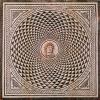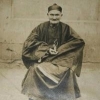Hi there,
I´ve recently learned that Magnolia officialis compounds have CB1 agonist/antagonist, cb2 partial agonist and Gpr55 antagonist properties.
As You know, posses the CB2 receptor some antipsychotic properties and the antipsychotic action of canabidiol (CBD) are related to its GPR55 blocking properties which is sometimes called CB3 receptor.
Brain cannabinoid CB2 receptor in schizophrenia.
http://www.ncbi.nlm....pubmed/19931854
Magnolia Extract, Magnolol, and Metabolites: Activation of Cannabinoid CB2 Receptors and Blockade of the Related GPR55
The bark of Magnolia officinalis is used in Asian traditional medicine for the treatment of anxiety, sleeping disorders, and allergic diseases. We found that the extract and its main bioactive constituents, magnolol and honokiol, can activate cannabinoid (CB) receptors. In cAMP accumulation studies, magnolol behaved as a partial agonist (EC50 = 3.28 μM) with selectivity for the CB2 subtype, while honokiol was less potent showing full agonistic activity at CB1 and antagonistic properties at CB2. We subsequently synthesized the major metabolites of magnolol and found that tetrahydromagnolol (7) was 19-fold more potent than magnolol (EC50 CB2 = 0.170 μM) exhibiting high selectivity versus CB1. Additionally, 7 behaved as an antagonist at GPR55, a CB-related orphan receptor (K B = 13.3 μM, β-arrestin translocation assay). Magnolol and its metabolites may contribute to the biological activities of Magnolia extract via the observed mechanisms of action. Furthermore, the biphenylic compound magnolol provides a simple novel lead structure for the development of agonists for CB receptors and antagonists for the related GPR55.
http://www.ncbi.nlm....pubmed/24900561
Furthermore I´ve found that Quercetin has inverse agonism properties at the Cb1 receptor.
Homology modelling of CB1 receptor and selection of potential inhibitor against Obesity
http://www.ncbi.nlm....les/PMC3398776/
But I rather avoid it since it increases my "special" depression and it impairs Synaptic transmission
Quercetin targets cysteine string protein (CSPalpha) and impairs synaptic transmission.
http://www.ncbi.nlm....pubmed/20548785
Echinacea purpurea has some CB2 activating properties
Synergistic immunomopharmacological effects of N-alkylamides in Echinacea purpurea herbal extracts.
http://www.ncbi.nlm....pubmed/19303464
I would be glad if someone knows any additional CB1 antagonists or Gpr55 antagonists
and could show a source of tetrahydromagnolol. (maybe a groupbuy ?)
So I welcome any related discussion about CB ligands and the alteration or modification (e.g. Epigenetic) of cannabinoid signaling.
Edited by Flex, 24 July 2014 - 04:06 PM.


















































